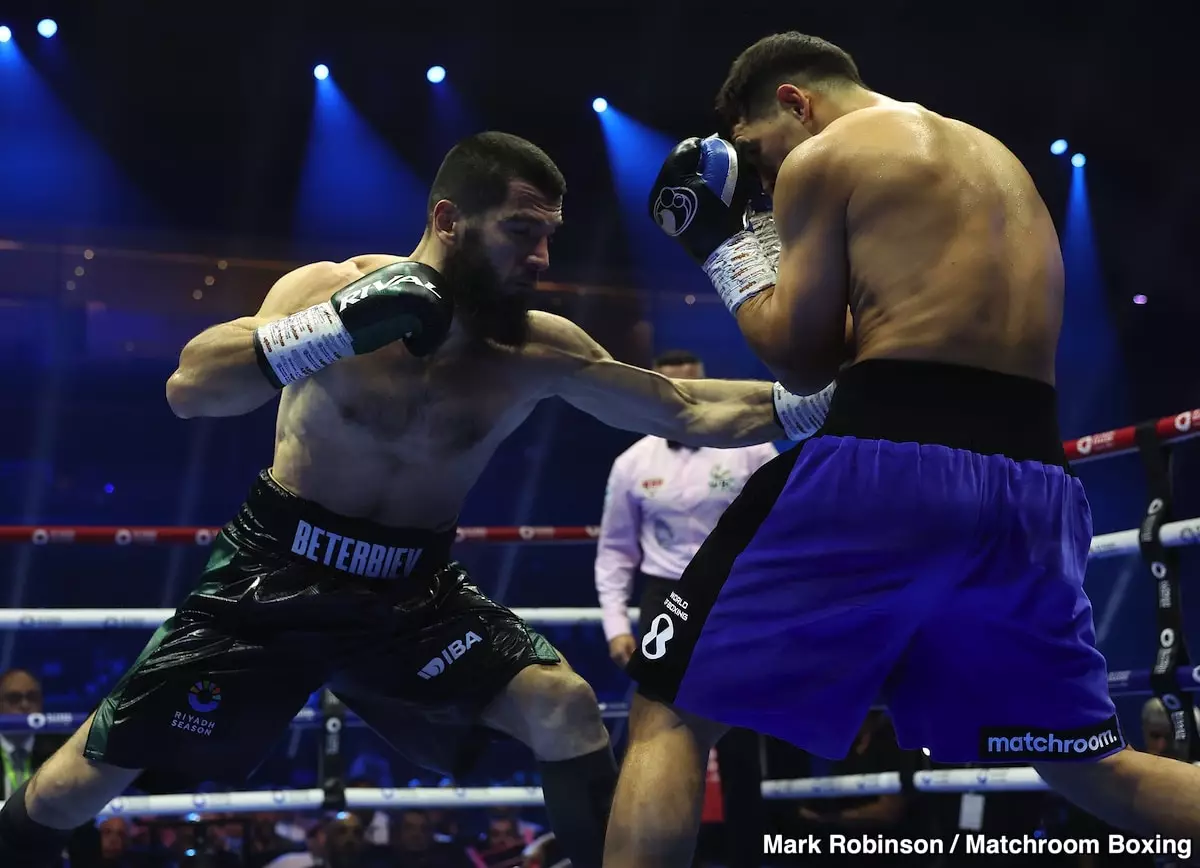In the competitive landscape of boxing, strategy often dictates outcomes as much as skill and power. Recently, former champion Sergio Mora made headlines by suggesting that current WBC interim light heavyweight champion David Benavidez should “age out” Artur Beterbiev, the undisputed light heavyweight champion, before stepping into the ring with him. This perspective sheds light on a critical aspect of boxing that frequently goes unnoticed: the role of timing in matchups between athletes at varying stages in their careers.
Boxing is not just a physical contest; it is a chess game where strategy can influence the outcome significantly. Mora argues that fighters frequently look to engage champions when they are past their peak performance. Beterbiev, who boasts a flawless record of 21 wins with 20 knockouts, is approaching his 40th birthday—a notable milestone in a sport where age can diminish a fighter’s capabilities. By waiting, Mora suggests, Benavidez can increase his chances against a potentially declining opponent. This approach is not without precedent; many past champions have found success against aging fighters, which begs the question: does this trend demonstrate shrewdness or a lack of competitive spirit?
Mora highlights a tactical rationale akin to betting odds, where mitigating risk becomes paramount. Benavidez, currently holding an undefeated record of 29 wins and 24 knockouts, has shown patience before, having delayed fights strategically to ensure better opportunities. However, this approach inevitably leads to criticism: is it honorable to let an opponent’s age dictate the timing of a match instead of facing them at their best? A thoughtful analysis reveals both the merits and potential pitfalls of such a mindset.
One of the critical risks associated with waiting for an opponent to “age out” involves the unpredictability of athletic performance. Beterbiev may be nearing 40, but that does not guarantee his decline will be apparent; athleticism can often defy chronological age. If Benavidez chooses to engage Beterbiev three to four years down the line, he must be aware that even an aged Beterbiev may still possess significant skills and power. The unpredictability of an opponent’s ability to adapt, evolve, or rejuvenate cannot be overstated.
Moreover, boxing’s landscape is ever-evolving, with fighters rising and falling in the rankings based on recent performances. Waiting might allow Beterbiev to retire by choice or to continue demonstrating dominance in the ring. If Benavidez waits too long, he may find himself grappling with other emerging talents who may not have the same fears about engaging past-their-prime champions.
For Benavidez, the road to a potential matchup with Beterbiev is immediate and not without hurdles. He must first defeat current WBA ‘regular’ champion David Morrell on February 1. This bout will serve as a litmus test, allowing Benavidez to exhibit his capabilities against a formidable opponent while signaling to the boxing world that he is ready for the next step. If he successfully navigates this upcoming challenge, he not only establishes his position as a title contender but also gains momentum leading into a high-stakes fight against Beterbiev or the winner of the anticipated rematch with Dmitry Bivol.
Mora’s commentary on the dangers of Beterbiev’s fighting style, which thrives in close-quarters brawls, also warrants attention. This aspect of Beterbiev’s game poses a threat to Benavidez, who is stepping up in weight and facing an opponent renowned for his power and aggression. The implications of this fight extend beyond mere titles; they offer insights into Benavidez’s ability to handle pressure and skill within the ring.
In the world of boxing, the intersection of timing and honor remains complex. While Mora advocates for a pragmatic approach to matchmaking—one that favors age and potential decline—the spirit of competition may urge fighters to face their adversaries head-on, irrespective of age. Ultimately, the decision that Benavidez makes in approaching Beterbiev will reflect not just his strategic acumen but also his dedication to the sport and its legacy. As history has shown, the best matchups are often those fought at the height of both athletes’ careers, creating moments that transcend mere statistics and become part of boxing lore.

